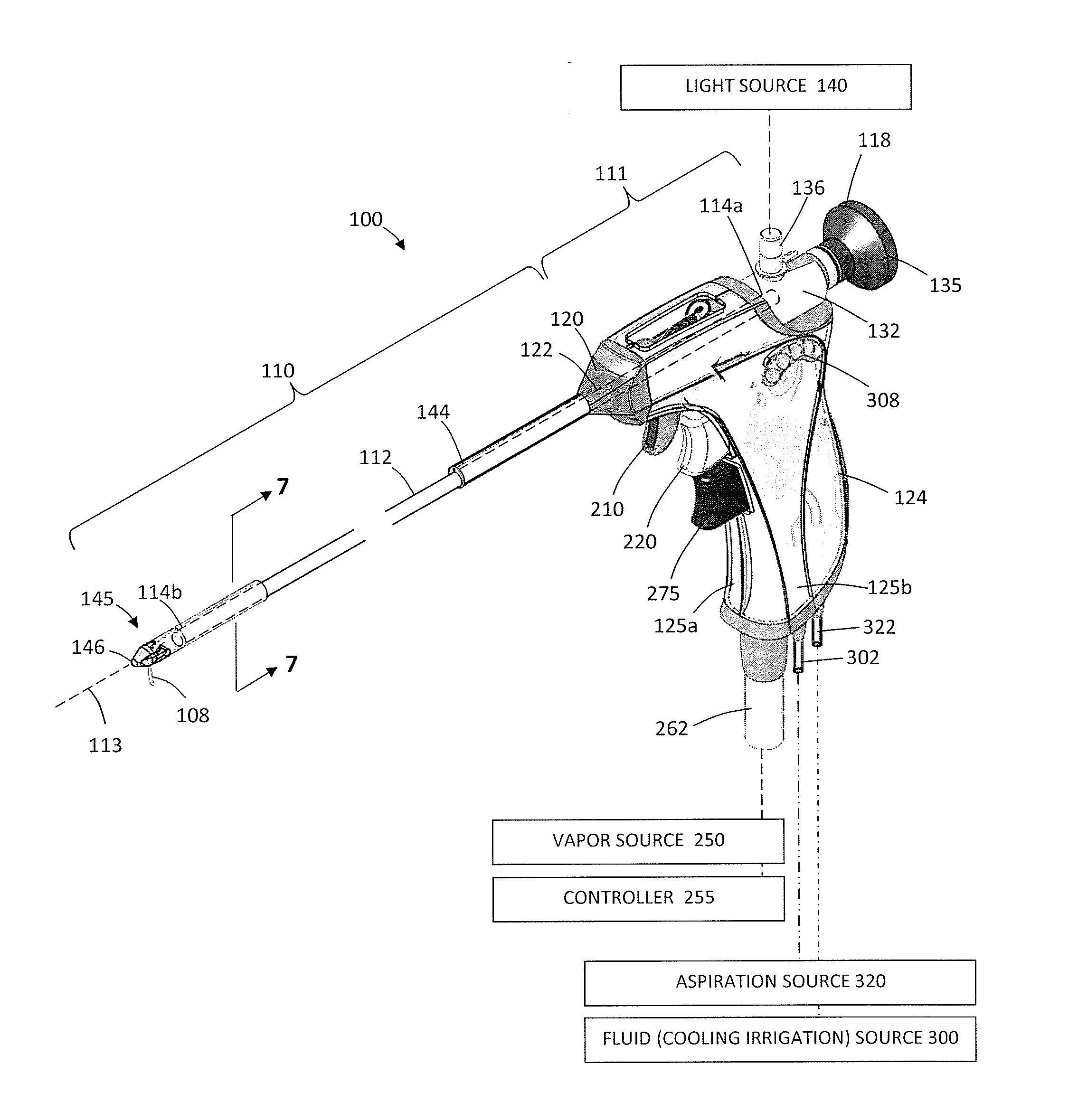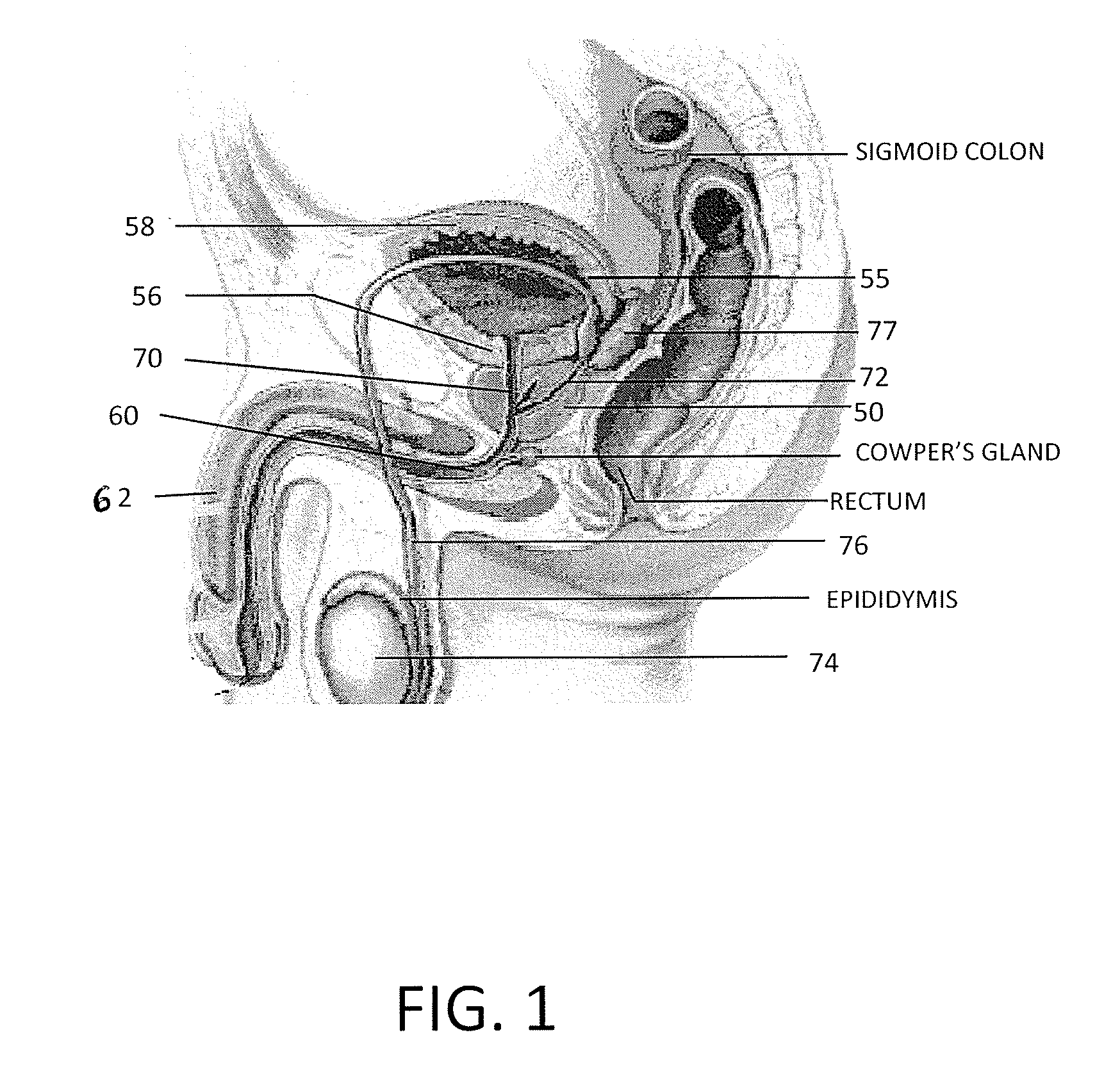Systems and Methods for Prostate Treatment
- Summary
- Abstract
- Description
- Claims
- Application Information
AI Technical Summary
Benefits of technology
Problems solved by technology
Method used
Image
Examples
Embodiment Construction
[0044]FIGS. 4, 5 and 6 depict one embodiment of a probe 100 configured for trans-urethral access to the prostrate which provides a viewing mechanism to view the urethra as the probe is navigated to a site in the interior of the patient's prostate. The probe 100 further carries an extendable and retractable microcatheter member 105 (FIG. 5) having a distal tip portion 108 (FIG. 4) configured to penetrate into precise targeted locations in transition zone tissue in prostate lobes to ablate targeted tissue volumes.
Handle and Introducer Portion
[0045]In FIG. 4, it can be seen that probe 100 has an elongate introducer portion 110 configured for insertion into the urethra and a handle portion 111 for gripping with a human hand. The key structural component of introducer portion 110 comprises a rigid introducer sleeve or extension sleeve 112 extending along longitudinal axis 113 with proximal end 114a and distal end 114b. A bore 115 (FIG. 5) in the rigid extension sleeve 112 extends along l...
PUM
 Login to View More
Login to View More Abstract
Description
Claims
Application Information
 Login to View More
Login to View More - R&D
- Intellectual Property
- Life Sciences
- Materials
- Tech Scout
- Unparalleled Data Quality
- Higher Quality Content
- 60% Fewer Hallucinations
Browse by: Latest US Patents, China's latest patents, Technical Efficacy Thesaurus, Application Domain, Technology Topic, Popular Technical Reports.
© 2025 PatSnap. All rights reserved.Legal|Privacy policy|Modern Slavery Act Transparency Statement|Sitemap|About US| Contact US: help@patsnap.com



